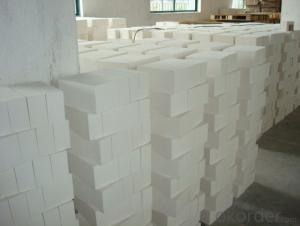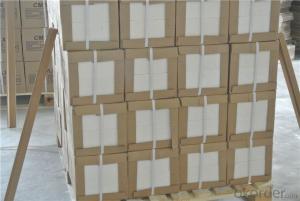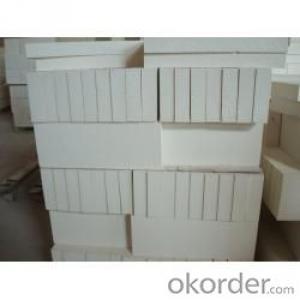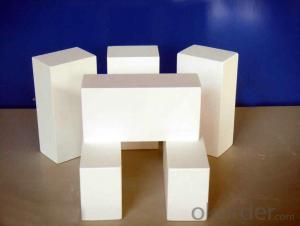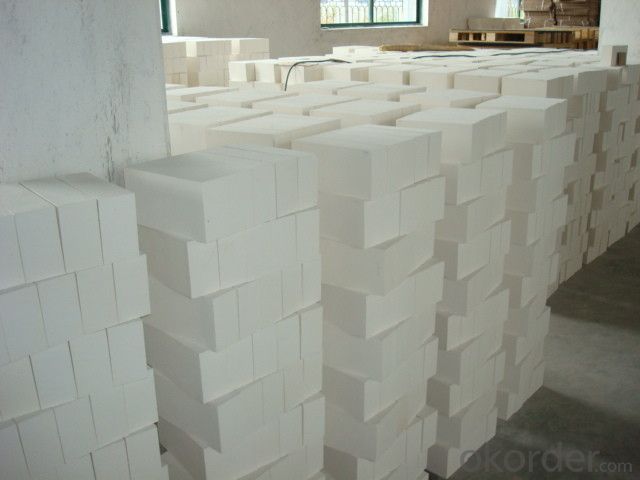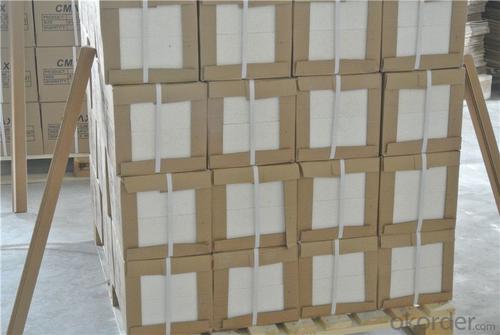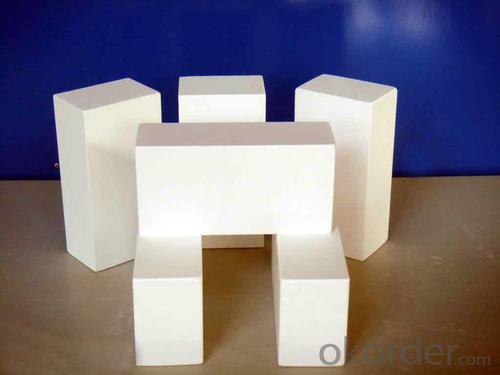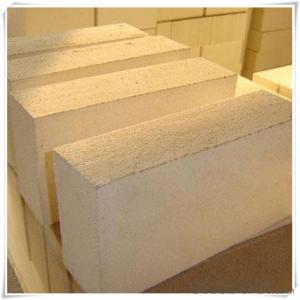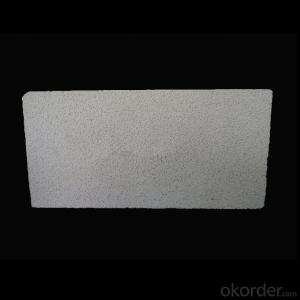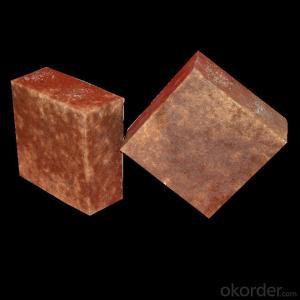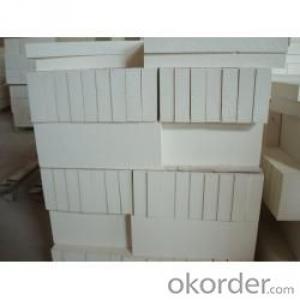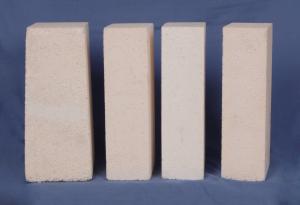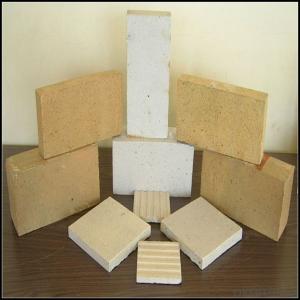Insulating Fire Brick - High Temperature Bubble Alumina Brick
- Loading Port:
- Tianjin
- Payment Terms:
- TT OR LC
- Min Order Qty:
- 2 m.t.
- Supply Capability:
- 1000 m.t./month
OKorder Service Pledge
OKorder Financial Service
You Might Also Like
Bubble Alumina Brick and Insulating Firebrick are high temperature refractory brick, max temp 1800 deg C, used in furnace kiln.
Bubble Alumina Brick and Insulating Firebrick are high temperature refractory brick.
Bubble Alumina Brick. We stock in both 2.5 & 3” sizes. We also carry double bump interlocking anchor styles. For use up to 1800C, these brick have excellent insulating properties as well as high hot strengths.
Insulating firebrick, we carry produces thirteen types of Insulating Fire Brick for use in applications from 2,000°F (1,093°C) to 3,200°F (1,760°C). Each type is formulated to meet specific thermal and physical requirements and after firing is machined to precise tolerances.
Made from high purity refractory clays and other ceramic raw materials, these insulating fire brick contain a carefully graded organic filler which is burned out during manufacture to give a uniform controlled pore structure.
Advantages of bubble alumina brick.
High Insulating Va
The high compressive strength of bubble alumina brick allows for self-supporting structures at elevated temperatures. Insulating fire brick are compatible with dense fire brick and add strength to the whole construction.
Low Heat Storage
Lower heat storage versus dense brick means reduced fuel costs in cyclically operated heating equipment. lue
The light weight and high insulating value of refractory brick make possible thinner furnace walls, improved efficiency and lower operating costs.
Strong
The high compressive strength of bubble alumina brick allows for self-supporting structures at elevated temperatures. Insulating fire brick are compatible with dense fire brick and add strength to the whole construction.
Low Heat Storage
Lower heat storage versus dense brick means reduced fuel costs in cyclically operated heating equipment.
Application
DJM 26 Light Weight Insulating fire brick are used for the lining of converter, alternating current arc furnace, direct Current arc furnace and the ladle slag line, etc.
Company Advantage
(1)Long Insulating Fire Brick manufacture history: 25 years manufacturer
(2)Advanced equipment
(3)Diversification of production standards: ISO ANSI FEPA JIS ASTM
Equipment
1 unit of Ceramic Abrasive (SG Abrasive) pilot production line
1 unit of high-end coated abrasives (abrasive cloth) production line
2 units of Boron Carbide production lines
Q1 What’s the transport method?
A1 FCL delivery goods with wooden pallet or wooden case by sea; If LCL delivery, must with wooden case; Sometimes need open top, flat rack or bulk cargo.
Q2 What’s the required payment term?
A2 Generally 30% TT as the prepayment, 70% TT before delivery. If need, 100% Irrevocable Letter of Credit or negotiation.
Q3 Which country are our products exported to?
A3 Apart from entire Chinese market, the US, Russia, Japan, Korea, Australia and some Southeast Asian Nations.
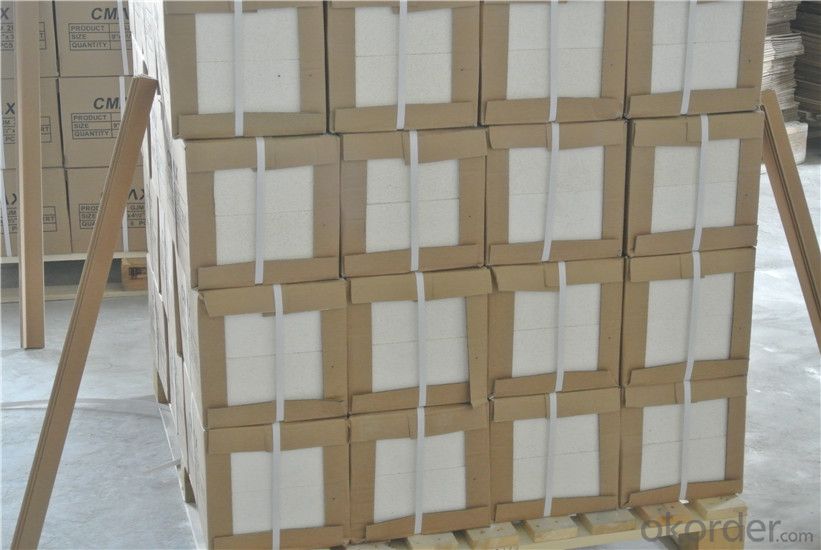
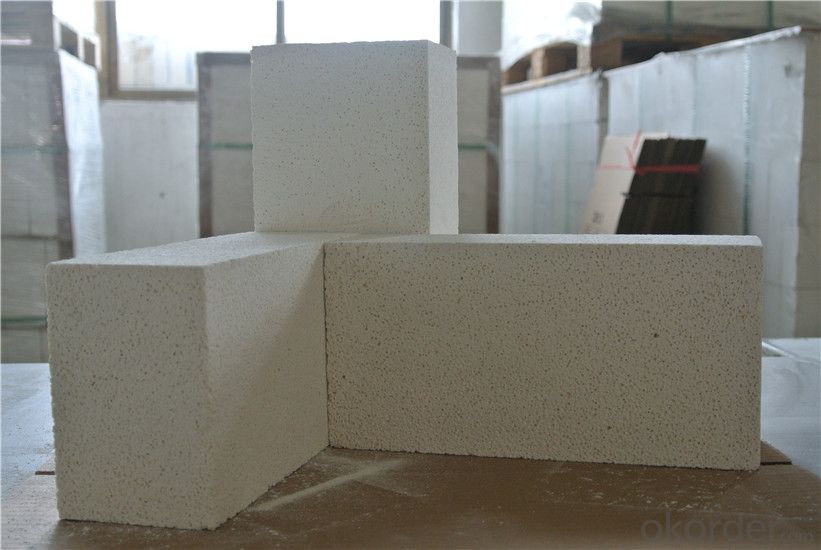
- Q: Can insulating fire bricks be used in smelting furnaces?
- Yes, insulating fire bricks can be used in smelting furnaces. Insulating fire bricks are designed to have low thermal conductivity, which helps to conserve heat and maintain high temperatures inside the furnace. This makes them an ideal choice for smelting furnaces where high temperatures are required. Additionally, insulating fire bricks also have a high resistance to thermal shock, which means they can withstand rapid temperature changes without cracking or breaking. This is particularly important in smelting furnaces where the temperature can fluctuate significantly. Overall, insulating fire bricks are an excellent option for smelting furnaces as they help to improve energy efficiency, reduce heat loss, and provide durability in high-temperature environments.
- Q: Can insulating fire bricks be used for insulation in power boiler walls?
- Yes, insulating fire bricks can be used for insulation in power boiler walls. Insulating fire bricks are designed to provide excellent thermal insulation, high temperature resistance, and low thermal conductivity. These properties make them suitable for use in power boiler walls, where insulation is crucial to reduce heat loss and improve energy efficiency.
- Q: Are insulating fire bricks eco-friendly?
- Insulating fire bricks can be considered eco-friendly to some extent. These bricks are typically made from natural materials such as clay, shale, and other fire-resistant minerals, which are abundant and readily available. The production process involves firing the bricks at high temperatures, which can be energy-intensive, but modern manufacturing techniques have reduced the environmental impact by using more efficient kilns and recycled materials. Moreover, insulating fire bricks have a long lifespan and can withstand high temperatures, which means they require less frequent replacement compared to other types of bricks. This leads to a reduction in waste generation and resource consumption over time. Additionally, these bricks have excellent thermal insulation properties, which can help reduce energy consumption in various applications. By minimizing heat loss, insulating fire bricks can contribute to energy efficiency and lower carbon emissions in buildings and industrial processes. However, it is important to note that the eco-friendliness of insulating fire bricks also depends on their proper disposal at the end of their lifespan. If they are not recycled or disposed of properly, they can contribute to landfill waste and potential environmental pollution. In conclusion, while insulating fire bricks have certain eco-friendly attributes such as being made from natural materials and their energy-saving properties, their overall environmental impact also relies on responsible manufacturing, use, and disposal practices.
- Q: How do insulating fire bricks affect the overall weight capacity of a structure?
- Insulating fire bricks can have a significant impact on the overall weight capacity of a structure. These bricks are specifically designed to have low density and high thermal insulation properties, which means they are lightweight compared to traditional dense firebricks. By using insulating fire bricks, the overall weight of the structure is reduced, allowing for more weight to be allocated to other components or materials. This is particularly beneficial in situations where weight restrictions are a concern, such as in aerospace, automotive, or marine applications. Moreover, the lightweight nature of insulating fire bricks reduces the overall load on the foundation and supporting structures. This can help prevent structural damage and increase the safety and longevity of the entire structure. However, it is important to note that while insulating fire bricks are lighter, they may have slightly lower compressive strength compared to dense firebricks. Therefore, it is crucial to carefully consider the specific requirements of the structure and ensure that the chosen insulating fire bricks can withstand the anticipated load and stresses. In summary, insulating fire bricks positively affect the overall weight capacity of a structure by reducing its overall weight and decreasing the load on supporting structures. However, it is essential to consider the specific application and choose the appropriate insulating fire bricks to ensure structural integrity and safety.
- Q: How do insulating fire bricks provide insulation against heat transfer?
- Insulating fire bricks provide insulation against heat transfer through their unique composition and structure. These bricks are made from lightweight refractory materials that have low thermal conductivity, meaning they do not conduct heat well. Additionally, they have a high porosity, which creates air pockets within the brick. These air pockets act as insulators, reducing heat transfer by conduction and convection. Overall, the combination of low thermal conductivity and high porosity in insulating fire bricks effectively prevents heat from passing through, providing insulation against heat transfer.
- Q: How do insulating fire bricks affect the overall durability of a structure?
- Insulating fire bricks play a crucial role in enhancing the overall durability of a structure. These bricks are designed to have a low thermal conductivity, which means they are effective in resisting heat transfer. By reducing the amount of heat that passes through the bricks, they help to maintain a stable temperature within the structure, protecting it from extreme temperature variations. One of the key benefits of insulating fire bricks is their ability to withstand high temperatures. They have a high melting point, which allows them to retain their structural integrity even in the presence of intense heat. This quality is particularly important in structures where high temperatures are generated, such as furnaces or kilns. The ability of insulating fire bricks to handle such extreme temperatures greatly contributes to the durability of the structure. Furthermore, insulating fire bricks offer excellent insulation properties. Their low thermal conductivity prevents heat from escaping or entering the structure, leading to energy efficiency. This not only reduces energy consumption but also protects the structure from potential damage caused by excessive heat loss. By maintaining a consistent temperature, insulating fire bricks prevent thermal expansion and contraction, which can lead to cracks and structural instability. In addition to their heat resistance and insulation properties, insulating fire bricks are also known for their resistance to chemical corrosion. Many structures are exposed to harsh environments or chemicals that can cause degradation. However, insulating fire bricks are made from materials that are resistant to chemical reactions, ensuring their durability and longevity. Overall, the use of insulating fire bricks significantly enhances the durability of a structure. Their ability to withstand high temperatures, provide insulation, and resist chemical corrosion make them a valuable component in various industrial and residential applications. By ensuring a stable and protected environment, insulating fire bricks contribute to the long-lasting and reliable performance of the structure.
- Q: Can insulating fire bricks be used in rotary kilns?
- Yes, insulating fire bricks can be used in rotary kilns. Insulating fire bricks are designed to have low thermal conductivity, which helps to reduce heat loss and improve energy efficiency in high-temperature applications like rotary kilns. Additionally, these bricks are lightweight and have good thermal shock resistance, making them suitable for the harsh and dynamic conditions within a rotary kiln.
- Q: Can insulating fire bricks be used in the construction of regenerators?
- Yes, insulating fire bricks can be used in the construction of regenerators. These bricks are designed to have low thermal conductivity, which makes them suitable for applications that require heat insulation. Regenerators, which are used in various industries like glass manufacturing and metal refining, require materials that can withstand high temperatures and efficiently store and release heat. Insulating fire bricks can fulfill these requirements, making them a suitable choice for regenerator construction.
- Q: Does the building with the exterior wall thermal insulation brick require adding an angle steel bracket in the middle of the brick?
- The first thing the man has to do is to do the quality test in front of the wall. As for the second, there is not much to do.
- Q: Can insulating fire bricks be cut or shaped to fit different spaces?
- Yes, insulating fire bricks can be cut or shaped to fit different spaces. They are typically made from a soft, lightweight material that can be easily cut or shaped using common tools like saws or knives. This flexibility allows for customization and adaptation to various spaces and applications.
Send your message to us
Insulating Fire Brick - High Temperature Bubble Alumina Brick
- Loading Port:
- Tianjin
- Payment Terms:
- TT OR LC
- Min Order Qty:
- 2 m.t.
- Supply Capability:
- 1000 m.t./month
OKorder Service Pledge
OKorder Financial Service
Similar products
Hot products
Hot Searches
Related keywords
